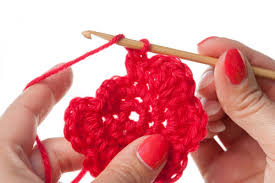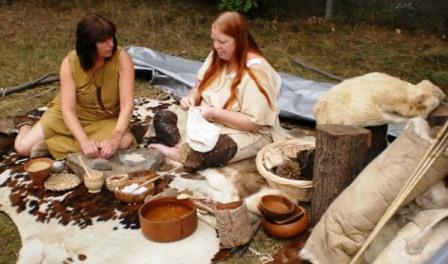 Crochet is done with one needle with a barb, a crochet hook. The hook you use hooks loops of one yarn together. It is widely used to make a kind of lace doilies, but you can also hook clothes.
Crochet is done with one needle with a barb, a crochet hook. The hook you use hooks loops of one yarn together. It is widely used to make a kind of lace doilies, but you can also hook clothes.
https://www.youtube.com/watch?v=FvTbYgI4W2c
Needle Bind (sometimes ‘knotless netting’) is the oldest known technique to use (short) wires for cloth. The wire is removed with a needle through a previously made loop, creating a new loop. With a needle loops are connected to each other. The technique looks like knitting, with features like crochet.
Traditionally, the workpiece is usually socks or hats, often to get felted to get a firmer and denser result.
The result looks like a knotless net.
A needle bound piece is not easy to pick out.
Needle binding has different stitches worldwide and is best known from Viking finds (with Aland and Coptic stitch, the Oslo stitch, the Mammen).
 Sprang technique
Sprang technique
Over two parallel sticks a long wire is coiled so that parallel vertical lines run as in weaving (warp). However, there are no transverse (weft) wires. The wires from one lower layer are turned to the wires of the other top layer and are there rotated as a kind of macramé or braid.
The windings are downward and upward well snug. You work from both sides to the middle.
In the next row, you do not turn one ,but two under wires, etc.
In the middle of the one-piece workpiece, the turning comes together and it must be reduced by binding the next each time through a loop of the previous one and fix to tie.
This is characteristic of the sprang technique.
The technique provides an open fishnet structure. Which is highly elastic and suitable for hairnets, hats and bags...
"Man is the only animal that looks better with clothes on.”(Cesare Pavese)
“Clothes make the man. The woman is good enough without. Sometimes better.”(Julien De Valcknaere)
